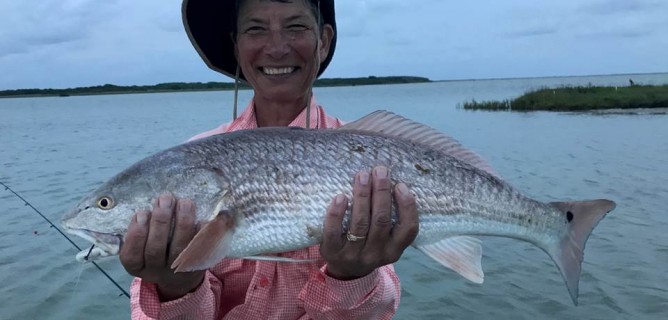By Annette “Dr. Z” Zaharoff, M.D.
Relaxing on the dock or a boat with a fishing rod and reel in your hand has got to be among the most therapeutic recreational activities anyone can imagine. Yet did you know that for some people, the very act of casting a line can be the source of pain?
This isn’t a phony fish tale. A research paper published in the April 2017 issue of the medical journal “The Physician and Sportsmedicine” reported on the results of a survey of competitive high school bass anglers in Alabama. Most of the more than 150 respondents were 15 to 16 years old.
According to the paper’s abstract:
“On average, anglers casted nearly 1,000 more times while competing versus fishing recreationally. Approximately 15% of anglers experienced shoulder, elbow, and wrist pain. The most common factors associated with pain included higher tournament cast counts, number of competitive years, number of tournaments/year, number of tournaments, and use of light weight lures.”
Ok, so maybe you and I don’t take part in competitive fishing events, but even the casual caster should be aware of their body mechanics so they can enjoy a healthy outing. I have treated people for low-back pain, elbow pain and even seen cases of tennis elbow related to fishing injuries.
Fishing enthusiasts can develop a form of tendinitis, an inflammation of the tendons and bony areas of the elbow called the “epicondyles,” where the muscles of the wrist and forearm attach to the bone. After strenuous or repetitive use, the tendon can become overworked and fatigued and eventually break down, leading to tendon damage and inflammation. Sitting or standing in a stooped position also can lead to upper and lower back pain.
So before you pack that rod and reel or go hunting for some good grub worms, here are some things to consider for your next fishing trip:
Warm up: If you are like me and you enjoy casting at the break of dawn. That means you may roll out of bed, get in the car and head straight to your favorite fishing hole. Take a few minutes to stretch, do some shoulder rolls, and stretch the shoulders and upper back. Try squeezing your shoulder blades together for five seconds, then releasing them three or four times. If you plan to fish while standing, it’s a good idea to also get in some hamstring and calf stretches.
Bend the knees: For people who stand while fishing, it’s not uncommon for them to lock their knees. This is not good for you for several reasons, particularly because it puts maximum stress on the knee joint, which increases the risk for injury. So bend your knees a bit while fishing, and move around a little from time to time.
Take a break: Fishing requires patience, but it’s always a good idea to take a break from any activity that requires a lot of standing or sitting. Take some time to stretch and move around a bit.
Tuck a newspaper or magazine under your eblow: If you are fly fishing, you may have a tendency to want to throw your elbow out and get your line “way out there” like you would if you were deep-sea fishing. But this is a waste of energy. You will tire out faster, and it won’t help you catch any more fish.
If you do come back with some soreness in the shoulder or elbow, it’s probably something you can treat at home with ice or a brace. If the pain persists, contact your doctor.
Like any recreational activity, fishing is meant to be enjoyed. We hope you catch a lot of fish, and that you do it safely.
Dr. Annette “Dr. Z” Zaharoff heads the Non-Surgical Center of Texas, focusing on non-surgical treatments to relieve pain and repair injuries. A former professional tennis player who competed on the WTA circuit, Dr. Zaharoff has been utilizing regenerative injection treatments including Stem Cell Therapy, PRP Injection Therapy and Prolotherapy for more than a decade. Learn more about her at www.drzmd.com. You can follow her on Facebook at www.Facebook.com/DrZaharoff.

